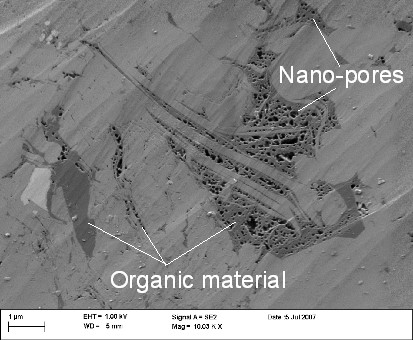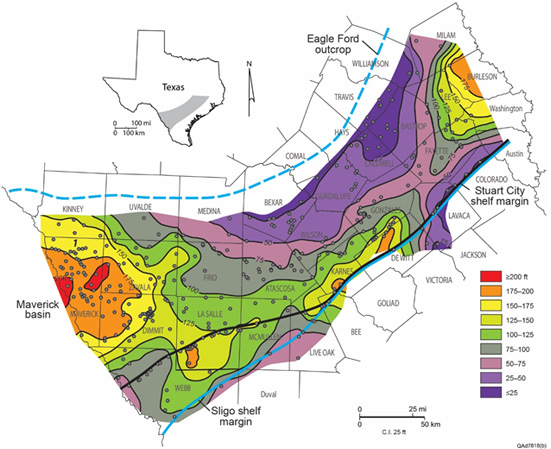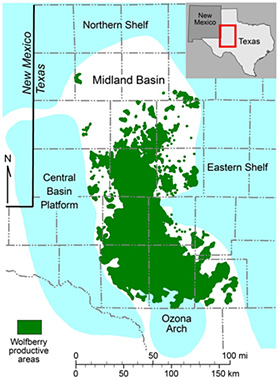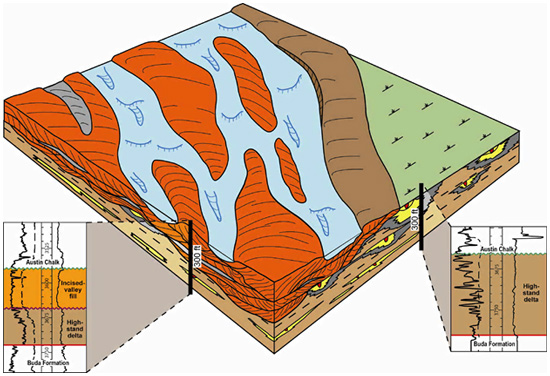
Nano-pores in the Barnett Shale are associated with organic material.
Nature of Barnett Shale Gas Pore Systems
STARR was the first to study where gas is to be found in very low porosity shale gas rocks. Our team was the first to discover micro-pores (also called nano-pores) in organic material which led to the realization that organics were both the origin and source of gas. This discovery helped focus and refine exploration and well completion techniques [study published in Journal of Sedimentary Research, Loucks et al., 2009].

Net-thickness (isopach) of the lower Eagle Ford Shale in the southwest and central Texas Gulf Coast. Modified from Hentz and Ruppel (2010).
Regional Stratigraphy Eagle Ford Shale Oil Play
The Eagle Ford Shale, extending across the Texas Gulf Coast, is one of the most important oil plays in Texas. Oil production in the Eagle Ford Shale in 2015, according to the Railroad Commission of Texas in consisted of approximately 1.2 million barrels, or about 10% of total oil production in Texas To support exploration and development of the Eagle Ford play, a STARR Team created a regional litho-stratigraphic framework for the play. This framework has aided oil companies both major and minor to rapidly explore and produce, from the Eagle Ford Shale.

Map of the Midland Basin in west Texas showing Wolfberry productive areas in green. The Wolfberry play is located within a Permian deep-water ocean basin. Surrounding shallow-water carbonate platforms are shown in blue.
Wolfberry (Wolfcamp and Spraberry) Trend, Permian Basin
The Spraberry Trend, productive areas extend across 18 counties and contain more than 10 billion barrels (B bbl) of oil. BEG and STARR is still evaluating the oil production potential of the Wolfcamp Formation. STARR’s regional study of the Spraberry and Wolfcamp Formations in the Permian Basin provided a detailed and comprehensive framework. This study supported for continued successful drilling of tight-oil reservoirs in one of the most productive unconventional trends in Texas. Results were published in the Bureau of Economic Geology Report of Investigations No. 277 (Hamlin and Baumgardner, 2012).

Depositional and reservoir model of the Woodbine Group in East Texas field. Additional untapped oil exists in discontinuous and deeper zones, indicated in yellow. Modified from Ambrose et al. (2009).
Helping to Revitalize East Texas Field
East Texas field, discovered in 1930, is the largest oil and gas field in the Lower 48 States. It has produced more than 5.4 billion barrels of oil from more than 31,000 wells. Although East Texas field is mature, this STARR study of the field was the first to fully understand the subsurface distribution of reservoir sandstone bodies. The study demonstrated that East Texas field still has the potential for hundreds of millions of barrels of additional oil production. An extensive article on the results of this study appeared in the AAPG Bulletin in February 2009 and Bureau of Economic Geology Report of Investigations No. 274.
